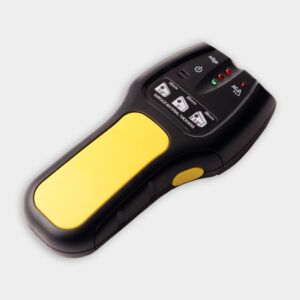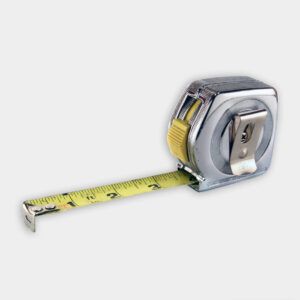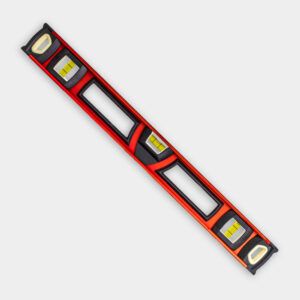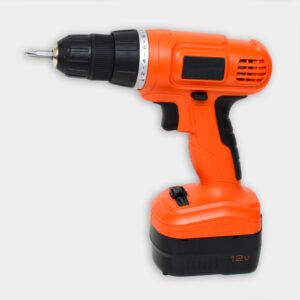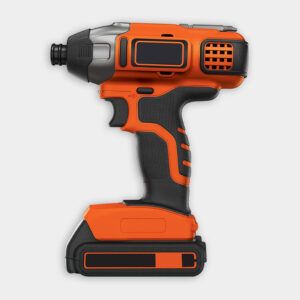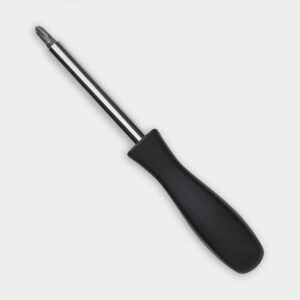Hanging a flat-screen TV on the wall can completely change the look and feel of your living room and free up valuable floor space. The key to a successful installation is choosing the right mount for your home needs. Read our guide below for tips on how to choose the right mount, secure it effectively, and achieve a professional finish.
Types of TV Mounts
Each type of TV mount offers unique benefits for different rooms. Below is a breakdown of common TV mounts that are available for your home.
Fixed Mounts
A fixed mount is the most straightforward and affordable TV mounting option. These mounts are sleek, low-profile, and hold the TV flush against the wall. Use them in rooms in which the walls are unobstructed, which will allow you to position the TV at a comfortable eye level. A fixed-mount setup is the best choice if you don’t think you’ll need to change the angle of the TV.
Tilting Mounts
Tilting mounts allow you to adjust the TV’s vertical angle, which is especially useful if you’re mounting the TV above the fireplace or at another high point along the wall. Tilting mounts reduce glare from windows or lights, and allow you to see the TV clearly, whether you’re sitting or standing.
Full Motion Mounts
Full motion mounts, also known as an articulating mount, are especially versatile. You can use these mounts to extend the TV away from the wall, swivel it left or right, or tilt it up or down. Full motion mounts allow you to see the TV from many different angles.
Choosing the Right Mount
Consider the following factors when choosing a TV mount:
- The size and weight of your TV: Make sure your mount can support your TV’s weight and dimensions.
- The structure of your wall (drywall, concrete, etc.): Identify the type of wall onto which you want to install your mount. Different wall types require different mounting hardware pieces. You need wall anchors for drywall, or masonry anchors for concrete walls, for example.
- The VESA pattern on the back of your TV: The Video Electronics Standards Association pattern is a set of standards for the distance between the mounting holes on the back of your TV. Your TV’s VESA pattern should match the mount’s compatible VESA patterns.
- The viewing angle you want: Determine whether you need a fixed, tilting, or full motion mount.
Preparing to Mount a TV
Follow the steps below to prepare for your project:
Tools and Materials
Start your mounting project by gathering the supplies below.
- Level
- Pencil
- Power drill with appropriate bits
- Socket wrench or impact driver
- Screwdriver
- Stud finder or magnet
- Tape measure
- TV mount kit
- Towel or blanket to protect the TV
Determine the Mounting Location
When you’re determining where to mount your TV, choose a spot that won’t interfere with foot traffic. The top of the TV should be around eye level when you’re standing. If you need to mount it higher, use a tilting or full motion mount, which will give you better viewing angles.
How To Install A TV Mount
Follow the steps below to securely install your TV mount.
Step 1: Locate the Studs
Locate the studs in your wall with an electronic stud finder or by using a magnet to detect screws within the studs. Once you’ve identified the studs, mark their locations and measure the distance between them. They should be 16 inches apart, which is the standard spacing in most homes.
Step 2: Mark and Drill Pilot Holes
- Use a level to draw plumb lines on the studs.
- Hold the wall bracket against the wall, and align it with the plumb lines.
- Mark the hole locations for the bracket.
- Drill pilot holes into the studs using a 1/8-inch drill bit.
Step 3: Attach the Wall Bracket
- Place a washer over each lag bolt.
- Hold the bracket in place.
- Use a socket wrench or impact driver to secure the bracket to the wall.
- Make sure the bracket is level as you tighten the bolts.
Step 4: Prepare the TV
- To attach the mounting plate to your TV, lay the TV face down on a soft, clean surface.
- Locate the mounting holes on the back of the TV.
- Attach the TV brackets or mounting plate using the provided hardware.
- If your TV has a curved back, use the kit’s spacers.
Step 5: Hang the TV
Ask a friend or family member to help you lift the TV and hang it onto the wall bracket. Most mounts feature a locking mechanism or set screw with which you can secure the TV to the bracket. Make sure this is engaged.
Optimizing Your TV Mounting Setup
Keep the key factors below in mind while you mount your TV.
Cable Management
Consider one of the cable management solutions below, which will help you to organize wiring.
- Cable ties or clips: Use these to bundle and secure cords neatly. Get adjustable cable ties, and make sure clips adhere to the wall securely.
- In-wall cable channels: These channels hide cables behind the wall for a sleek look. Make sure you install channels according to local building codes, and that they’re large enough to accommodate all cables.
- Surface-mounted wire molds: Use these easy-to-install solutions to conceal cables without having to make modifications to your wall. Attach these directly to the wall and paint them to match your decor.
Center the TV
To center your TV over a fireplace or another piece of furniture, inlay a piece of 1/2-inch plywood onto the studs before mounting the bracket. This setup allows you to adjust the bracket for precise alignment. Securely fasten and level the plywood so that it’s especially stable.
Adjusting for Viewing
Once you’ve completed your mounting project, adjust your TV by following the directions below.
- For full motion mounts: Extend and swivel the TV so that you can see it from different points in the room.
- For tilting mounts: Tilt the TV to reduce glare from windows or lights and improve sightlines from various seating positions. Make sure the screen is at eye level while you’re seated.
- Secure locking mechanisms: Make sure you’ve securely fastened all locking mechanisms. This prevents the TV from shifting.
TV Mounting Materials
See more TV mounts available at The Home Depot.
